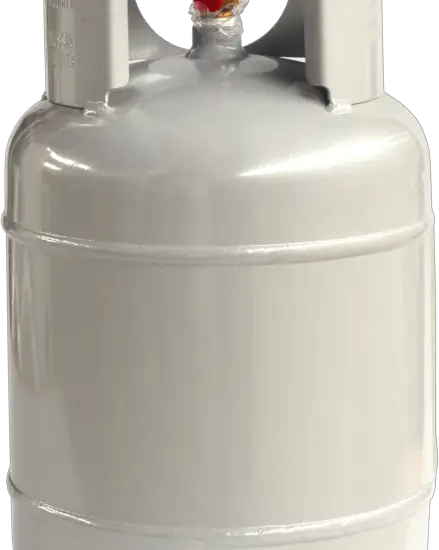R503 refrigerant, quite a cool kid on the block, right? Well, it used to be, but things are changing now. We’re going to explore all the nitty-gritty details about this once-popular coolant in the world of refrigeration. Buckle up!

Table of Contents
Introduction to R503 Refrigerant
Before we get into the thick of things, let’s set the stage with some basics.
Basic Definition of R503
The R503 refrigerant is a mix of two chemicals, R-13 and R-23. Now, isn’t that an interesting cocktail?
Chemical Composition of R503
What goes into this mix? It’s 89% R-13 (Chlorotrifluoromethane) and 11% R-23 (Trifluoromethane), giving R503 its unique properties.
Physical Properties of R503
R503 is a colorless gas that’s heavier than air and mainly used in ultra-low temperature applications. Not something you’d casually find in your home fridge, huh?
Common Uses of R503
So, where do we use this super-chilled refrigerant?
Ultra-Low Temperature Refrigeration Systems
R503 shines in ultra-low temperature systems, like those used in scientific research or medical facilities. It’s all about keeping things super cool, folks!
Specialty Cooling Applications
R503 is also a star in some specialty cooling applications. But with all stars come certain drawbacks, right?
Understanding the Performance of R503
Alright, so what makes R503 so special? Let’s find out!
Cooling Efficiency of R503
The low boiling point of R503 makes it highly efficient for cooling. But how does it stack up against other refrigerants?
Comparing R503 to Other Common Refrigerants
When compared to similar refrigerants, R503 is a rock star in the super low temp category. But don’t get too attached. There are some downsides that we need to chat about.
Stability and Safety Aspects of R503
Any coolant comes with a safety datasheet. And R503? No exception!
Operating Pressures and Temperatures
R503 operates under high pressure and ultra-low temperatures. So, not something to play around with, folks!
Material Compatibility and System Requirements
R503 requires specific materials and system requirements for safe and effective use. High-pressure equipment, anyone?
Environmental Impact of R503
Here’s the kicker. As cool as R503 is, it’s not so cool for the environment.
Ozone Depletion Potential of R503
Did you know R503 is a major contributor to ozone depletion? Yep, it’s a fact!
Understanding the Ozone Depletion Mechanism
R503 has Chlorine, which reacts with ozone in our atmosphere. This leads to ozone layer depletion. Not so cool now, huh?
The ODP of R503 Compared to Other Refrigerants
Compared to other refrigerants, R503 is a heavyweight in ozone depletion. As per EPA, it’s got one of the highest ODP values around.
Global Warming Potential of R503
It gets worse. R503 also contributes to global warming. Surprised?
Greenhouse Gas Effect of R503
R503 is a potent greenhouse gas. In simple terms, it traps heat in our atmosphere, which leads to global warming. Feeling hot under the collar?
GWP of R503 Compared to Other Refrigerants
When compared to other refrigerants, R503’s global warming potential is through the roof, as the IPCC reports.
For more articles on refrigerants, click here: Articles on Refrigerants: The Ultimate Guide to Understanding Them
Legal Aspects and Regulations Related to R503
With such an environmental impact, there must be regulations, right? Let’s take a look!
International Agreements and Regulations on Ozone-Depleting Substances
International agreements like the Montreal Protocol have put regulations on ozone-depleting substances, and yes, that includes R503.
Montreal Protocol and Its Impact on R503 Usage
The Montreal Protocol aims to phase out the production and consumption of ozone-depleting substances, including R503. So, the days of R503 are numbered.
Local Regulations Impacting R503 Usage in Different Countries
Different countries have their regulations concerning R503 usage. So, better check your local laws before handling this refrigerant.
Consequences for Non-Compliance with R503 Regulations
Non-compliance with R503 regulations? That could land you in hot water, folks!
Legal Sanctions for Non-compliant Use of R503
Non-compliant use of R503 can lead to hefty fines or even criminal charges in some cases. So, better safe than sorry!
Environmental and Corporate Responsibility
Beyond legal repercussions, there’s a huge responsibility towards our planet. Let’s do our part, shall we?
Alternatives to R503
So, what are the alternatives to R503? Here’s the good news.
Next-Generation Low-ODP and Low-GWP Refrigerants
With the phase-out of R503, low-ODP and low-GWP refrigerants are the next big thing.
Comparing Alternative Refrigerants to R503
These alternatives might not be as efficient as R503 but they’re much kinder to our planet. A worthwhile trade-off, wouldn’t you say?
Transition and Conversion Costs for Switching from R503
Switching from R503 can have costs, but it’s a long-term investment in our future. And hey, can you really put a price on saving the planet?
Evaluating the Performance of R503 Alternatives
Are these alternatives up to snuff? Let’s evaluate.
Efficiency and Stability of Alternative Refrigerants
While they may not match R503’s efficiency, these alternatives do offer stability and a way forward. That’s progress, right?
Environmental Impact of Alternative Refrigerants
The low-ODP and GWP of these alternatives make them a greener option. And green is the way to go, folks!
Conclusion
It’s been quite a journey, hasn’t it? With R503 on the way out, it’s exciting to see what the future holds. Innovation is key, wouldn’t you agree? Despite its problems, R503 played a key role in modern refrigeration. But as we’ve seen, it’s time for a change. Are you ready?